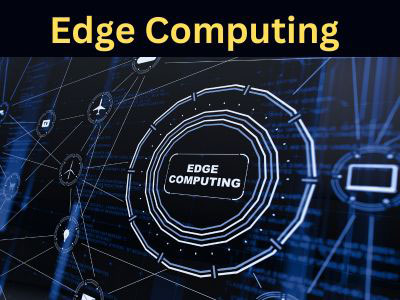Key Takeaway
Edge computing has limitations such as hardware constraints and potential security vulnerabilities. Since edge devices have limited resources, they might struggle with complex data processing tasks.
Additionally, managing a large number of distributed devices can be challenging. Security risks, like physical device tampering, add to the complexity of edge computing solutions.
Limited Processing Power Compared to Cloud Systems
While edge computing offers many advantages, one of its limitations is the processing power available compared to cloud systems. Cloud data centers benefit from vast computational resources, powerful servers, and scalable infrastructure that can handle complex tasks and process large volumes of data. Edge devices, on the other hand, are often smaller, resource-constrained devices with limited processing capabilities.
This difference in processing power can present challenges when handling computationally intensive tasks, such as large-scale data analytics or training machine learning models. While edge computing is designed to process real-time data locally, certain tasks, like running complex AI models, may require offloading some processing to the cloud. This creates a hybrid model where edge computing handles immediate, low-latency tasks, and cloud systems manage more intensive workloads. The key to successful edge computing deployments is understanding these limitations and optimizing workloads accordingly. By combining edge and cloud resources efficiently, businesses can overcome processing power constraints while still reaping the benefits of edge computing.

Higher Initial Costs for Edge Deployments
Deploying edge computing systems often involves higher initial costs compared to traditional cloud setups. These costs stem from the need for specialized hardware, such as edge servers and IoT gateways, as well as the complexity of installation and integration.
However, these upfront investments are offset by long-term benefits, including reduced bandwidth costs and improved performance. For businesses, understanding the ROI of edge deployments is critical, and engineers must focus on designing cost-effective solutions that meet performance requirements.
Challenges in Managing Distributed Edge Devices
Managing distributed edge devices presents unique challenges, primarily due to their decentralized nature. Monitoring and maintaining a large number of devices across diverse locations require robust management tools and strategies.
Connectivity issues can hinder real-time monitoring and updates, particularly in remote areas. Implementing redundancy measures and leveraging IoT gateways can mitigate these challenges. Additionally, ensuring consistent software updates and security patches across all devices demands efficient orchestration tools.
Scalability is another concern. As edge networks grow, managing resources and performance across an expanding infrastructure becomes complex. Addressing these challenges ensures the reliability and scalability of edge systems.
Interoperability Issues with Legacy Systems
Another limitation of edge computing is the potential for interoperability issues with legacy systems. Many organizations rely on older industrial equipment, software, and technologies that were not designed to communicate with modern edge devices or cloud-based systems. Integrating edge computing into existing systems often requires significant upgrades or modifications to ensure compatibility.
For example, legacy machinery may not have the necessary sensors or connectivity features to interact with edge devices. Similarly, older software may not be compatible with the data streams generated by new edge devices, leading to challenges in data processing and analysis.
To overcome these issues, companies must invest in bridging technologies or middleware that can facilitate communication between legacy systems and modern edge infrastructure. This adds to the cost and complexity of edge deployments and can slow down the process of digital transformation. Organizations must carefully plan their edge computing strategy to ensure seamless integration with existing technologies while future-proofing their systems.
Environmental Constraints for Edge Device Deployment
Environmental factors play a crucial role in the deployment and performance of edge devices. Since edge computing involves deploying devices in various locations, including remote, outdoor, or harsh industrial environments, these devices must be designed to withstand challenging conditions.
Temperature fluctuations, humidity, dust, vibrations, and other environmental factors can impact the reliability and lifespan of edge devices. For example, edge devices deployed in factories or outdoor areas must be robust enough to function in extreme temperatures or resist damage from moisture or dust.
Moreover, power supply and connectivity issues can further complicate edge device deployment in remote areas where infrastructure may be lacking. Ensuring a stable and reliable power source and network connectivity is vital for maintaining the continuous operation of edge devices.
To address these environmental constraints, edge devices are often built to be rugged and resilient, but organizations must still consider these factors during deployment and maintenance. Ensuring the durability and functionality of edge devices in such environments is essential for the successful implementation of edge computing solutions.
Conclusion
While edge computing offers substantial benefits, including lower latency, improved data processing, and enhanced real-time decision-making, it also presents a number of limitations that must be addressed for optimal performance. Limited processing power, high initial costs, device management challenges, interoperability issues with legacy systems, and environmental constraints are some of the key hurdles organizations face when adopting edge computing.
To overcome these limitations, businesses must carefully plan their edge deployments, considering factors such as the nature of their applications, budget, and existing infrastructure. Leveraging hybrid edge-cloud solutions, investing in robust device management systems, and ensuring compatibility with legacy technologies can help mitigate many of these challenges.
By addressing these limitations, organizations can unlock the full potential of edge computing, ensuring that their systems are secure, efficient, and capable of driving innovation in an increasingly connected world. As technology continues to evolve, edge computing will continue to play a central role in shaping the future of industries worldwide.
